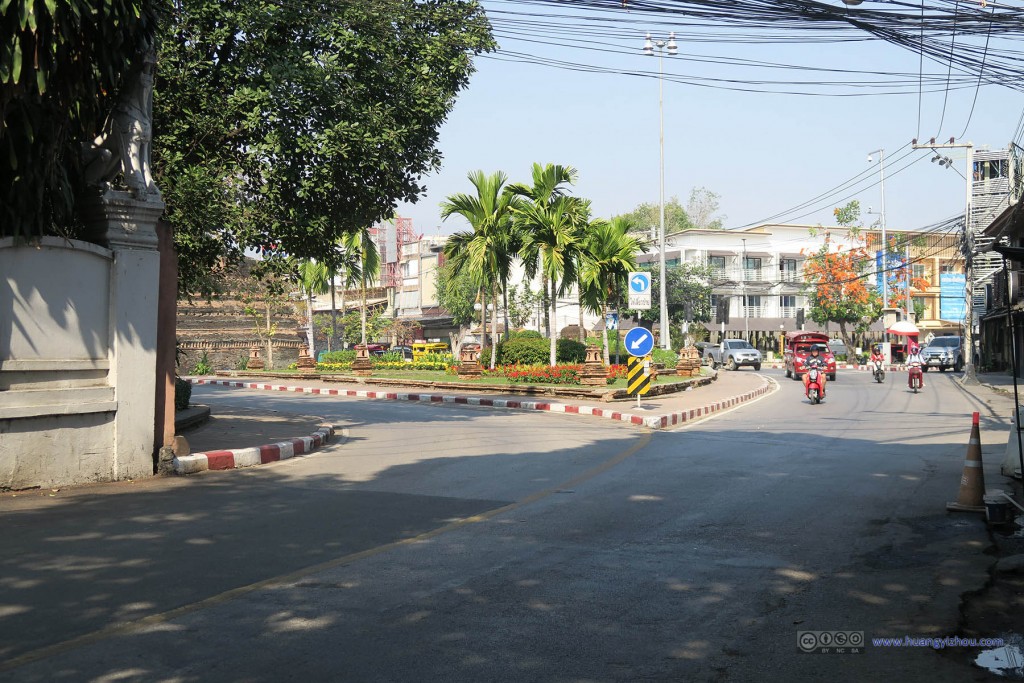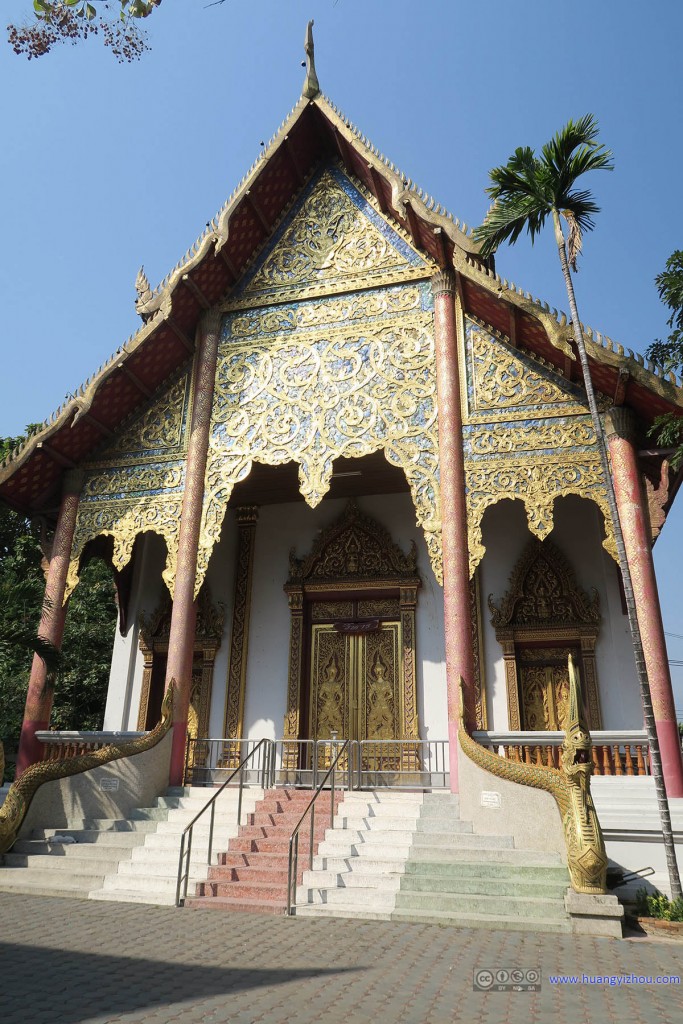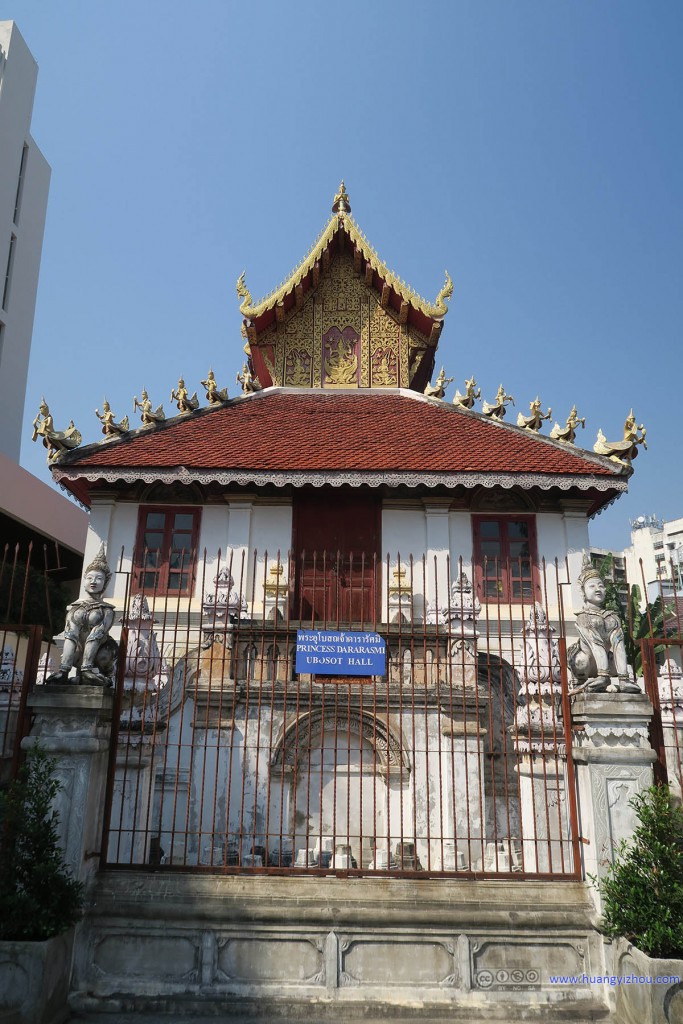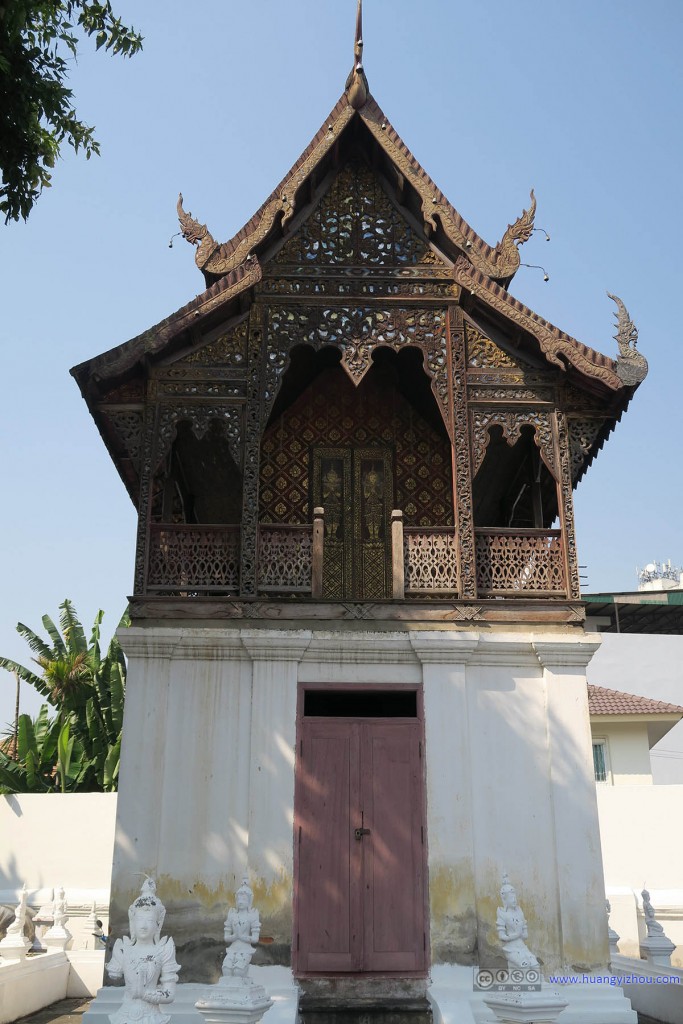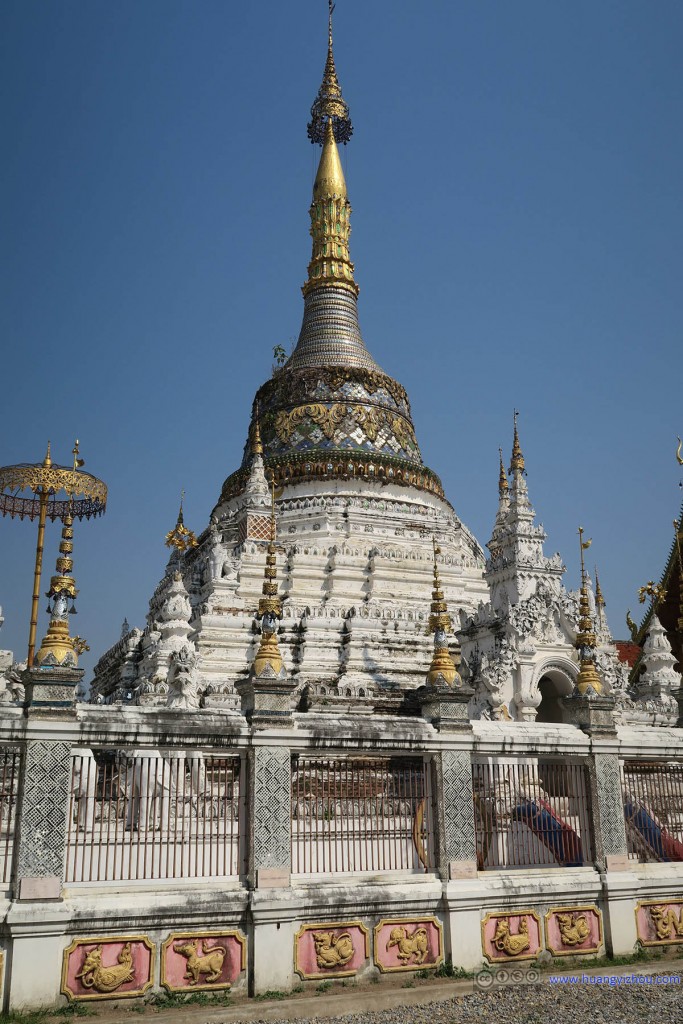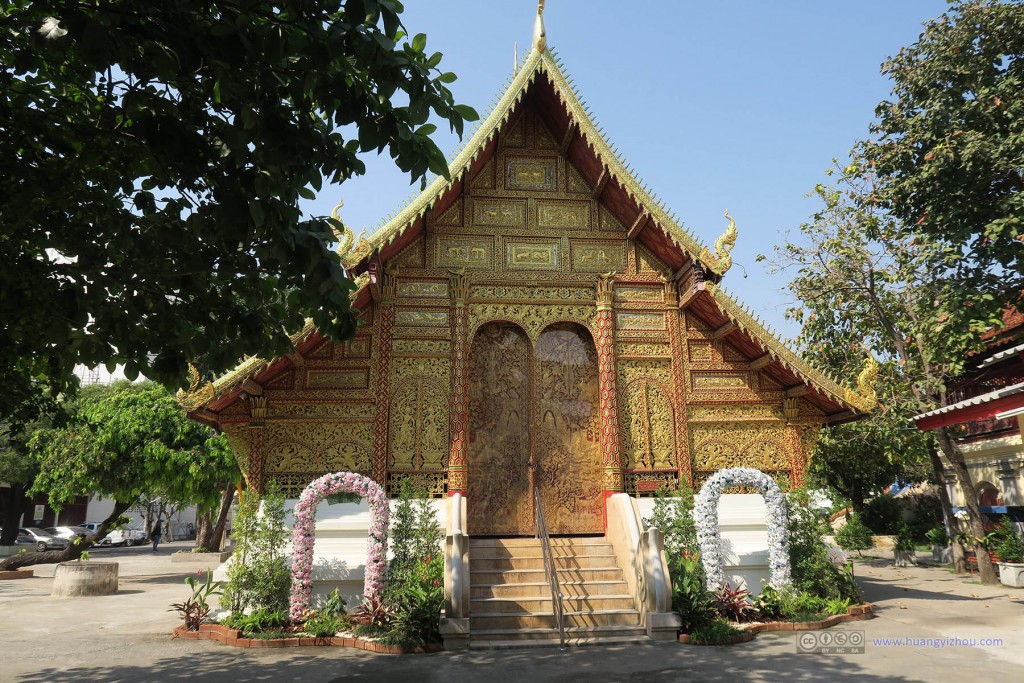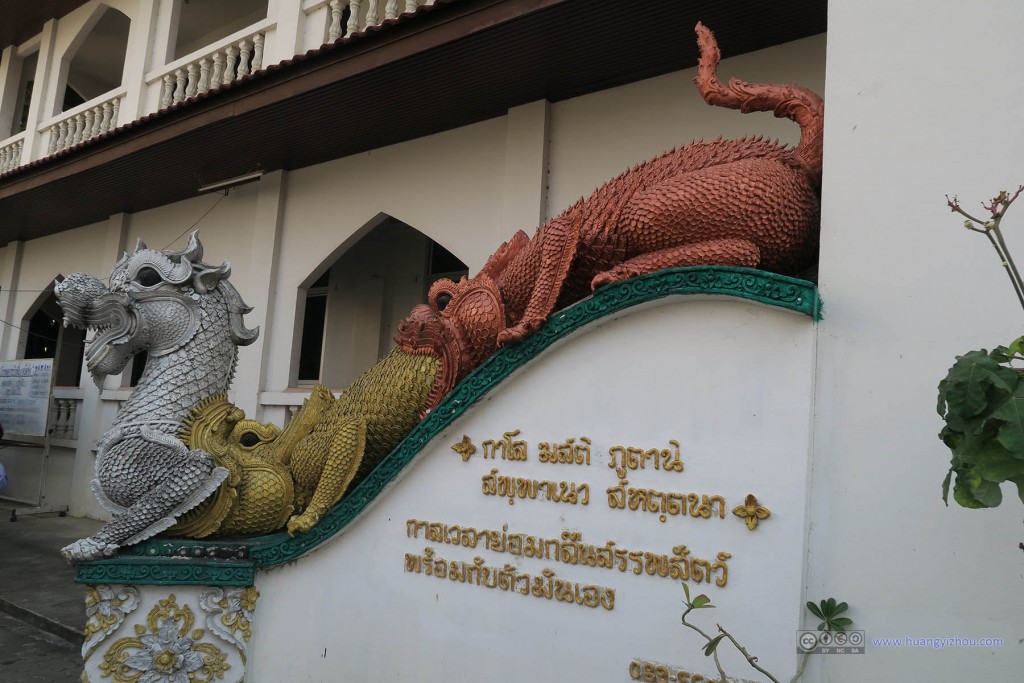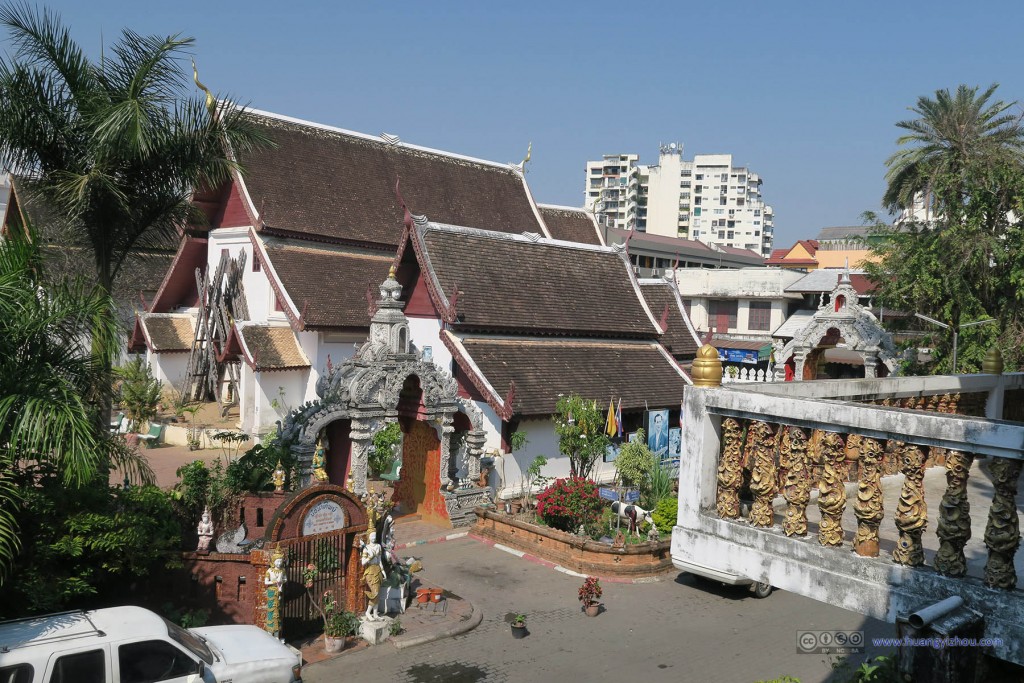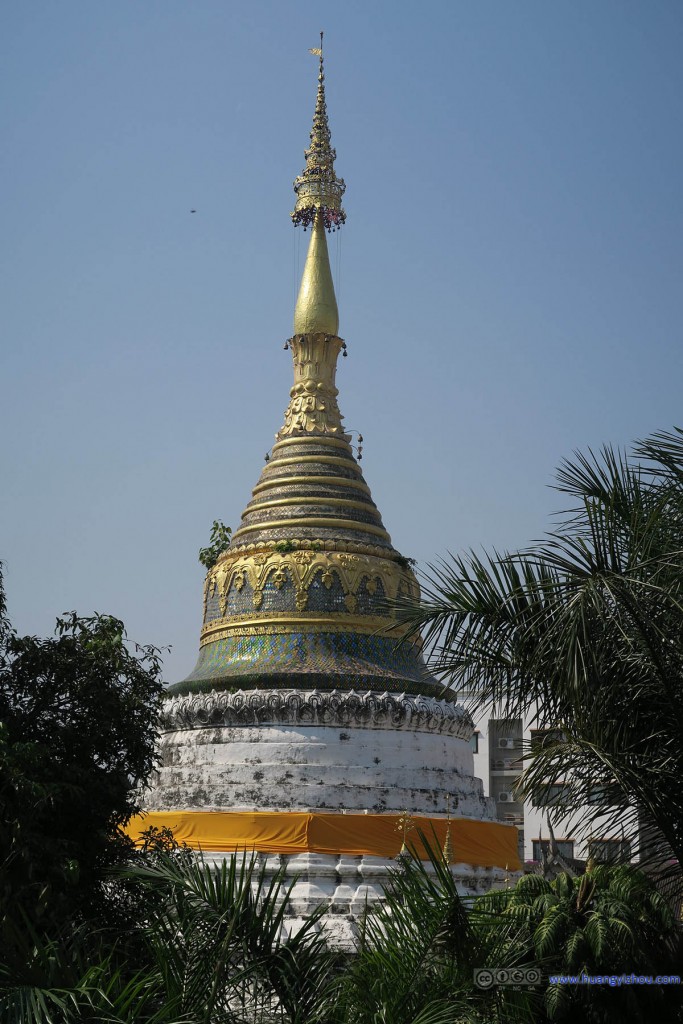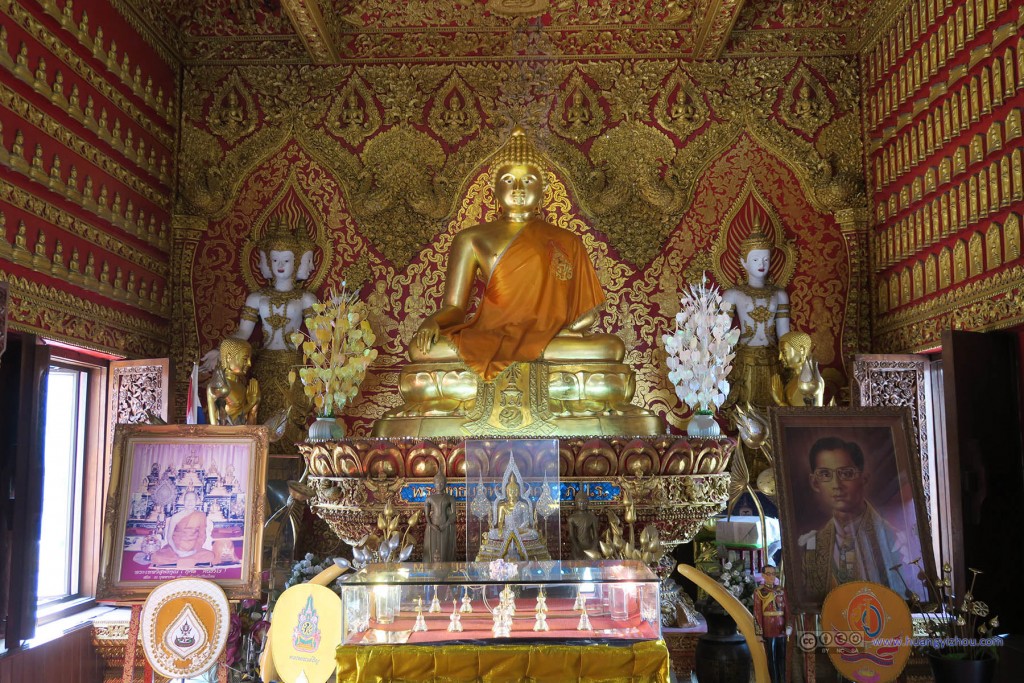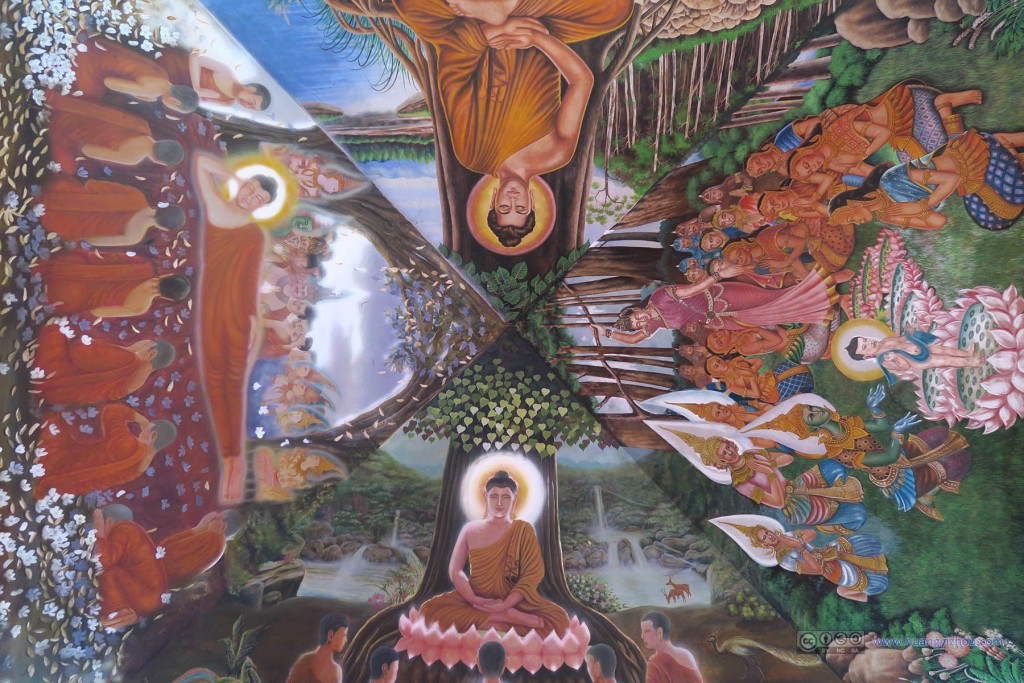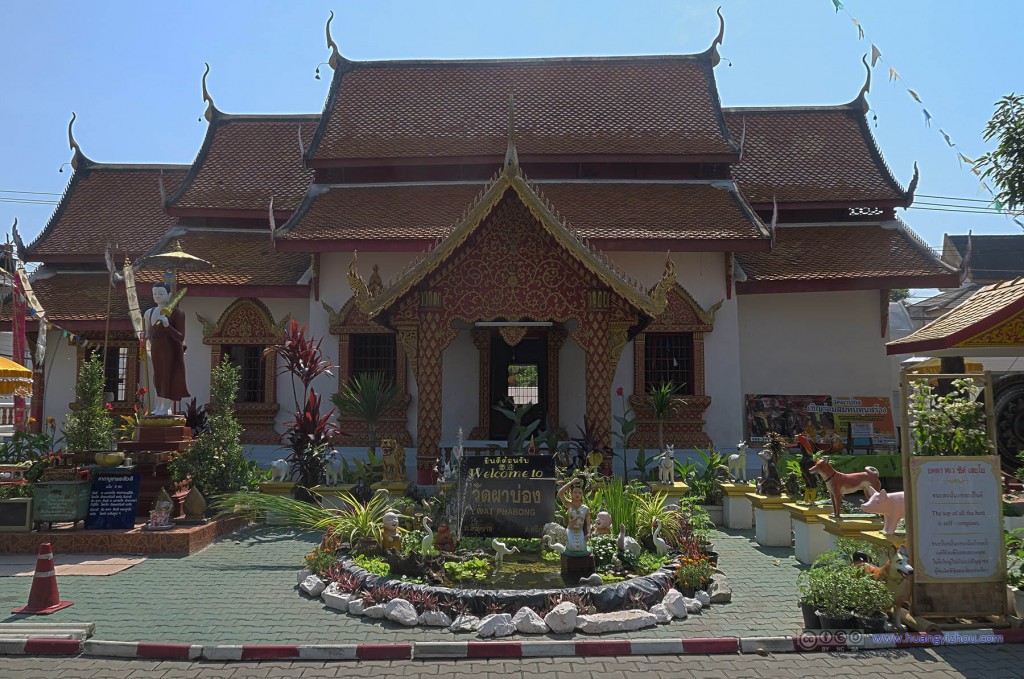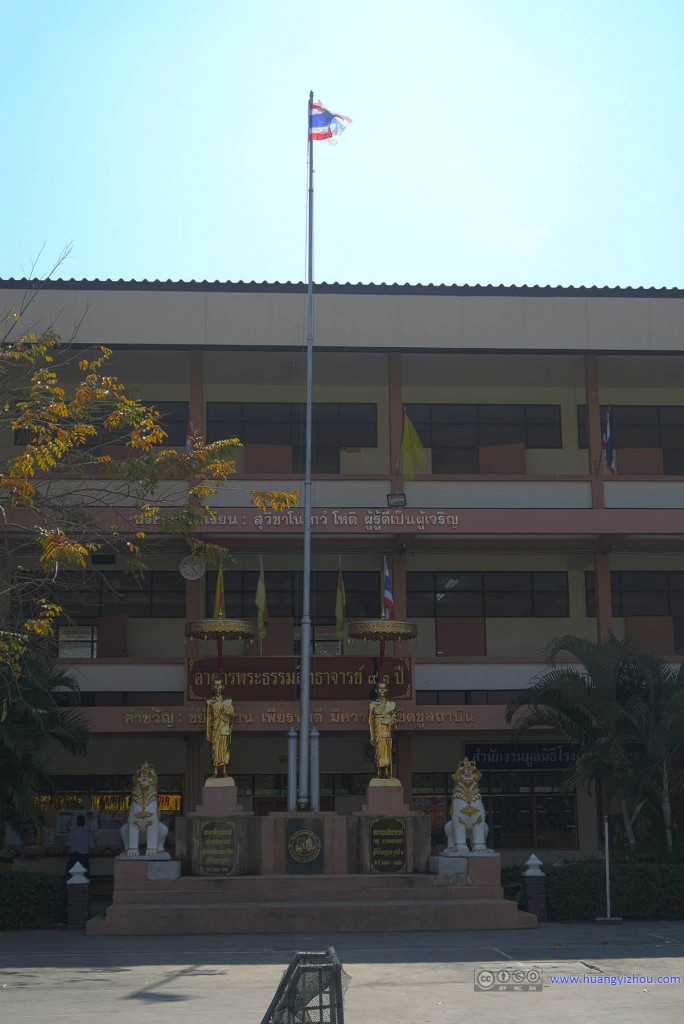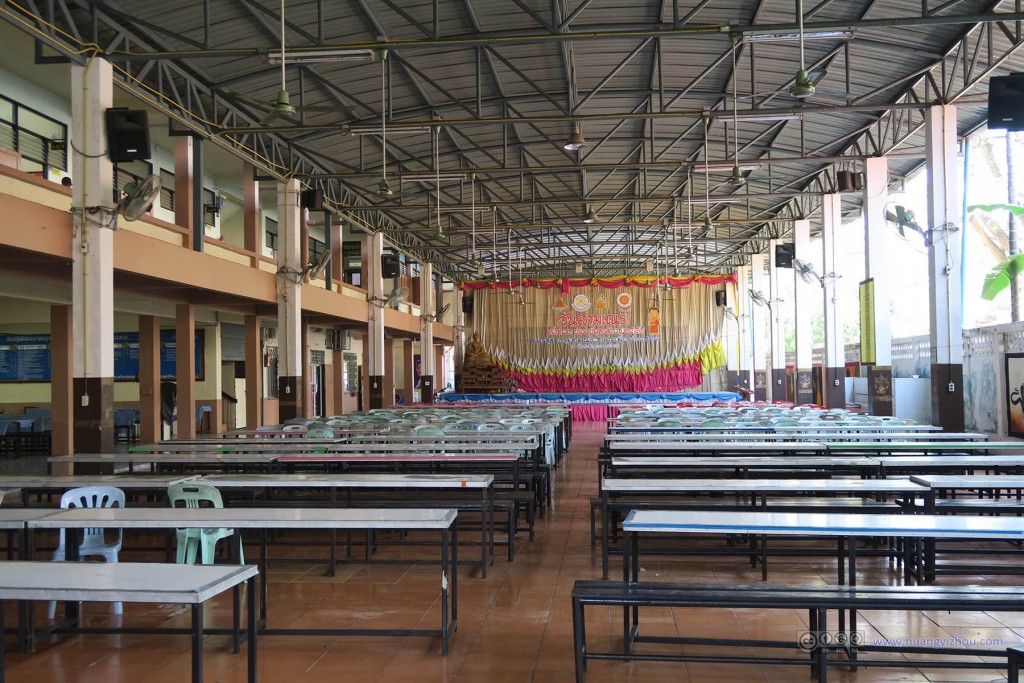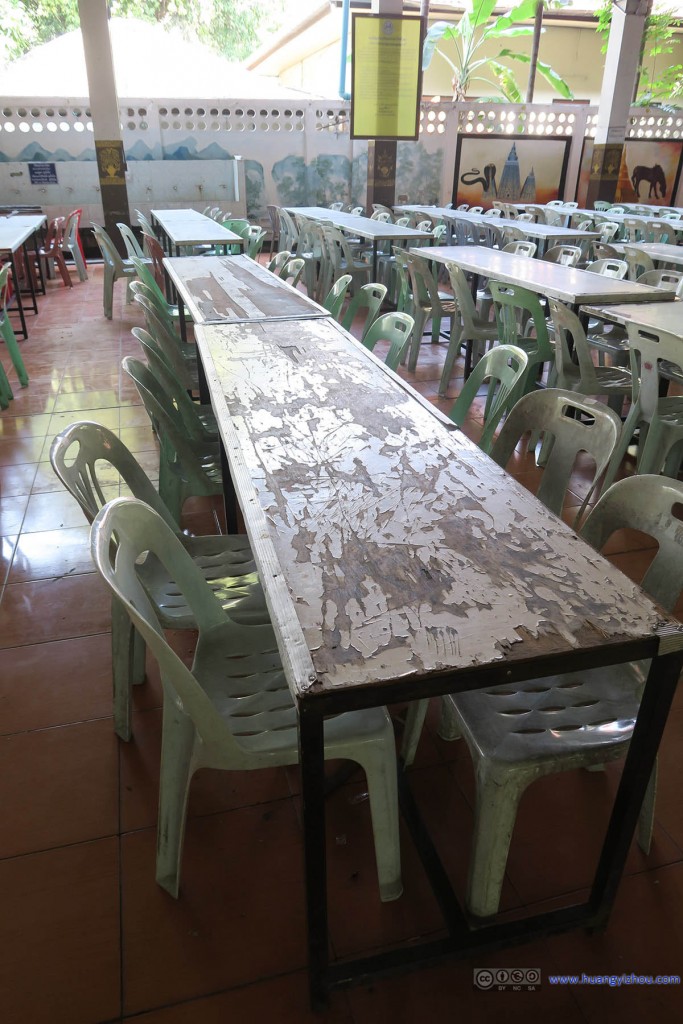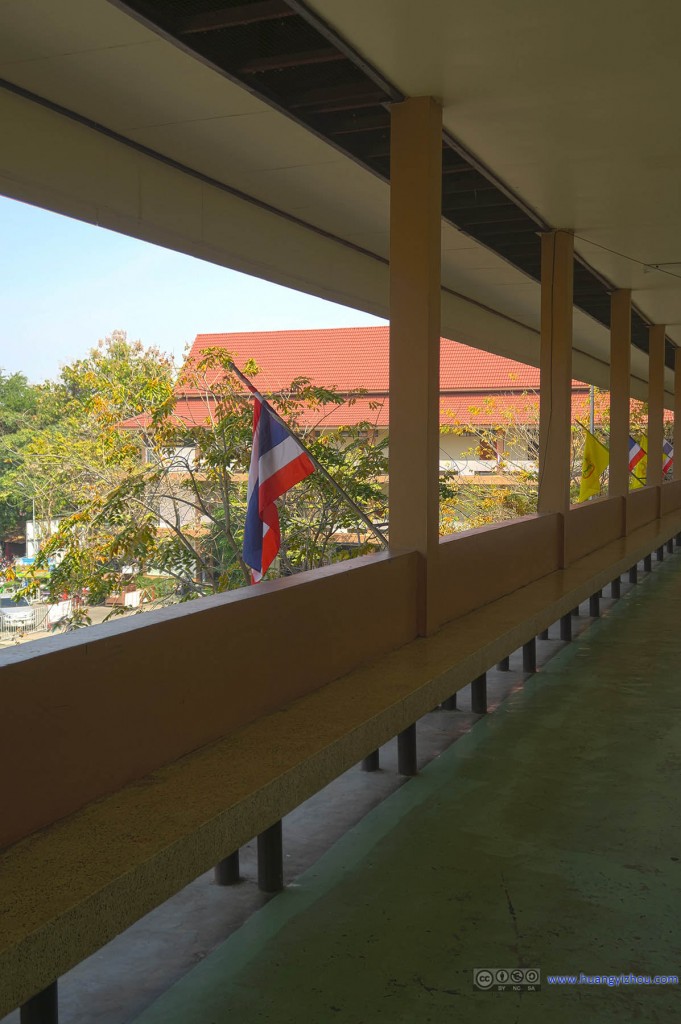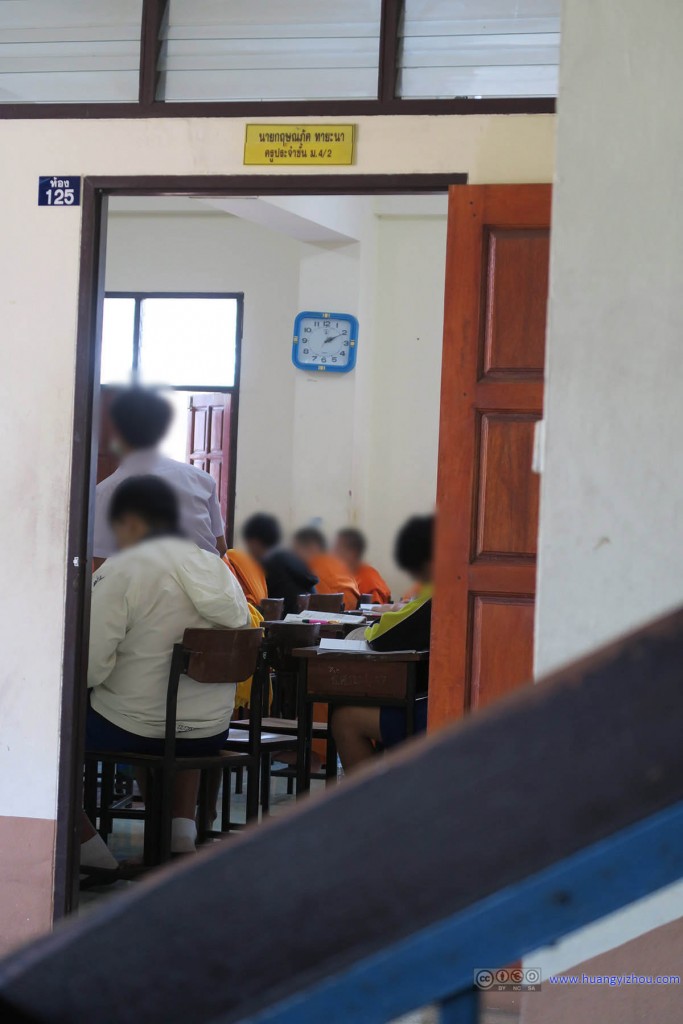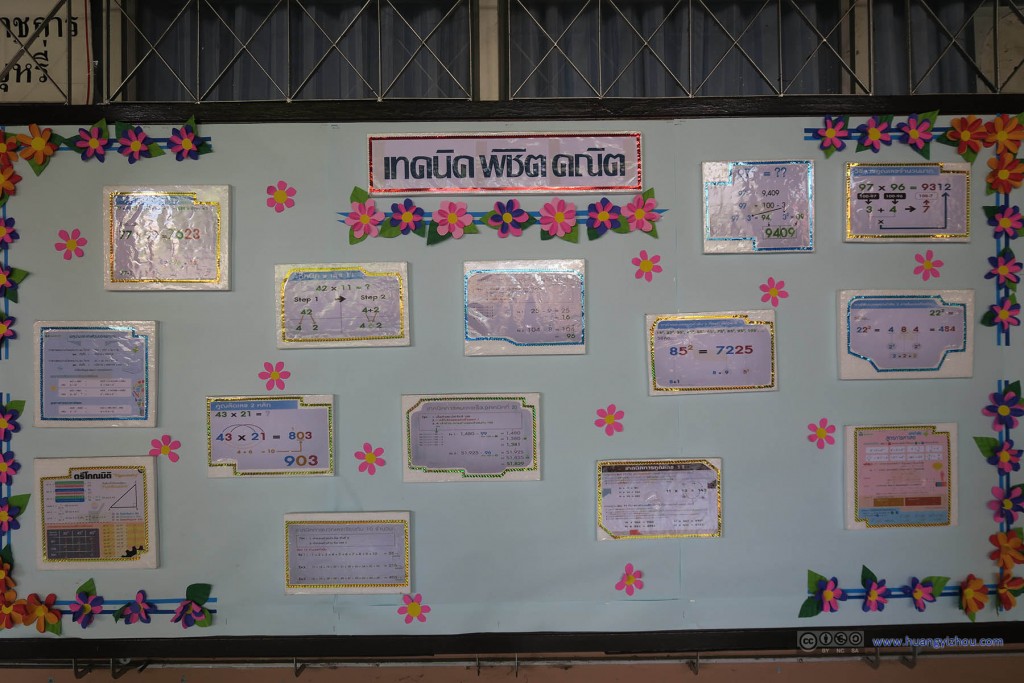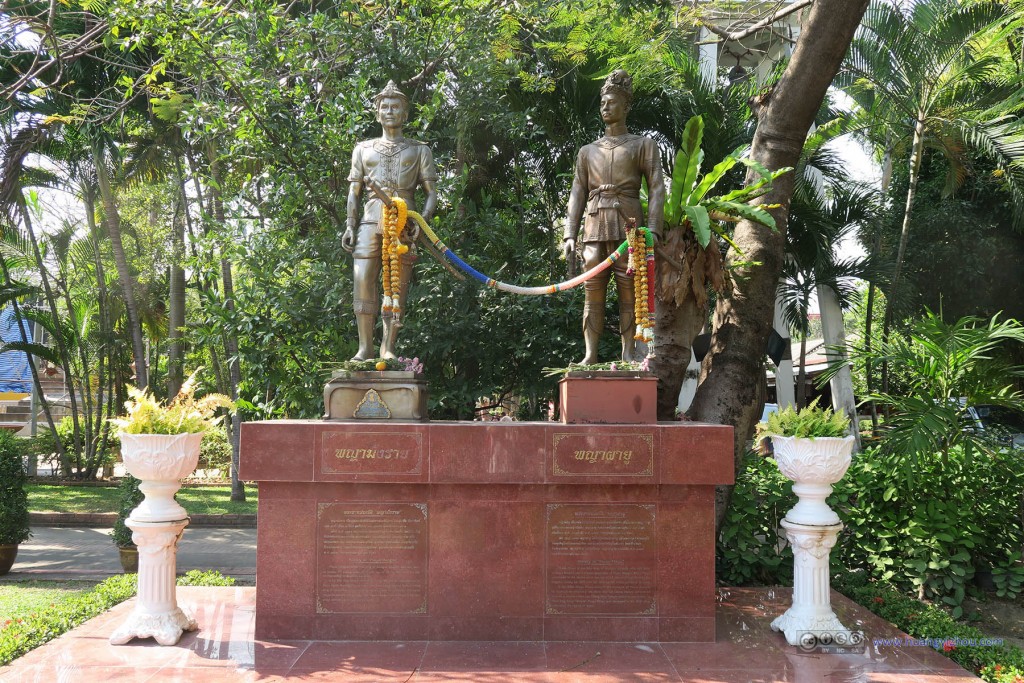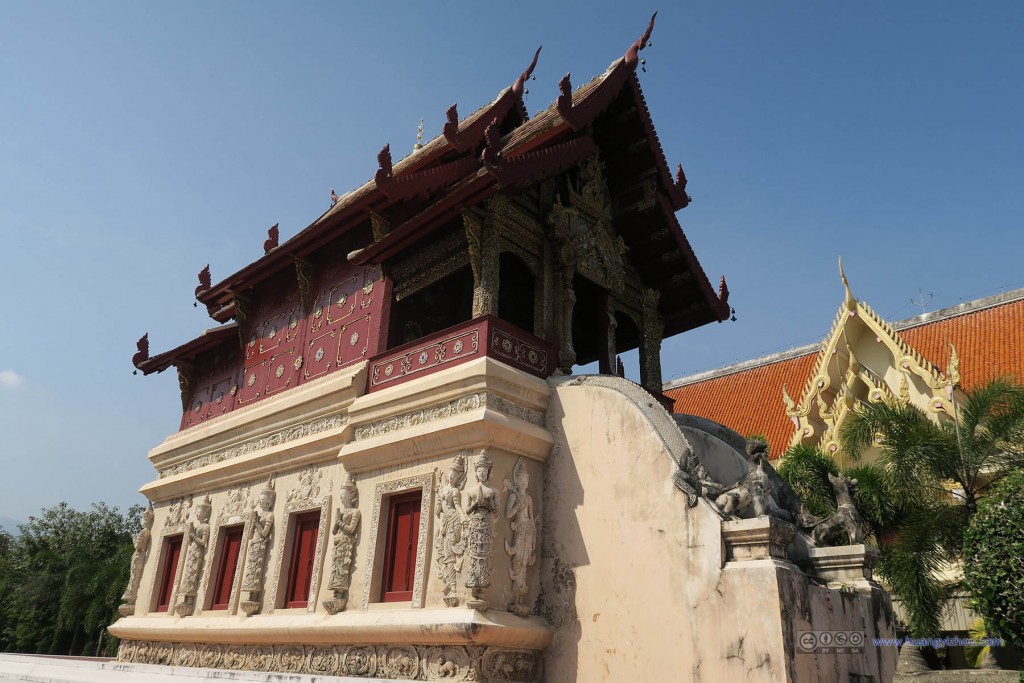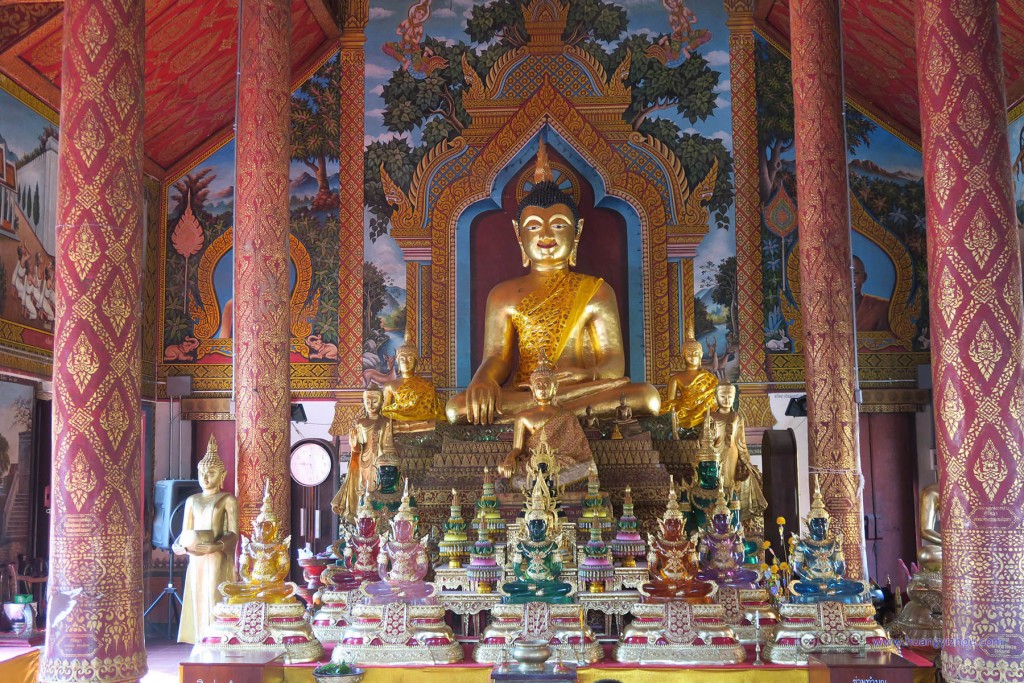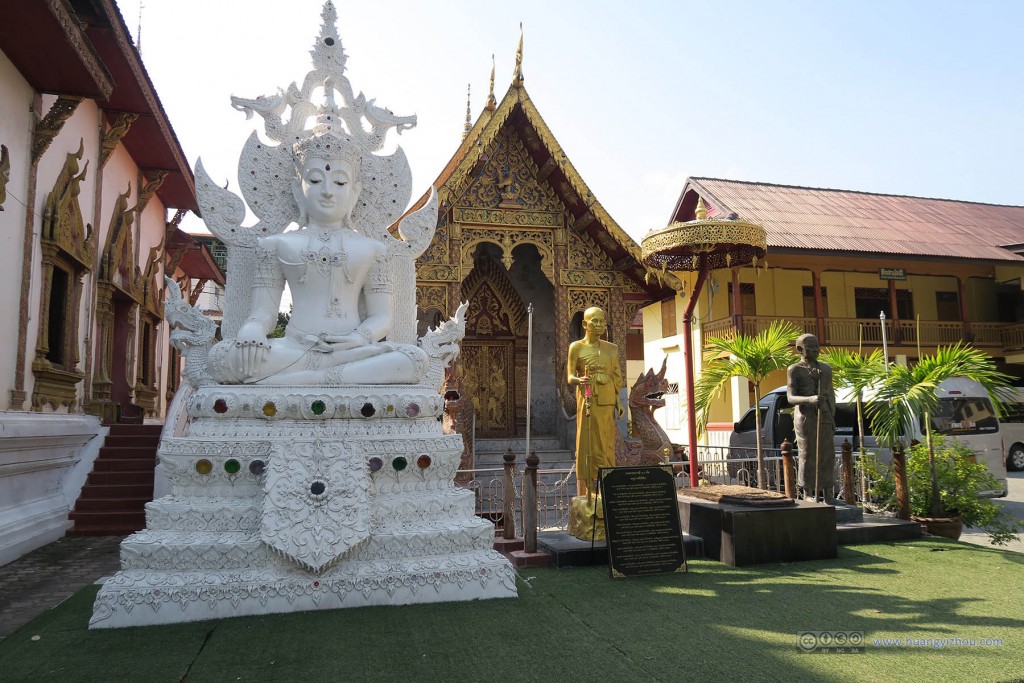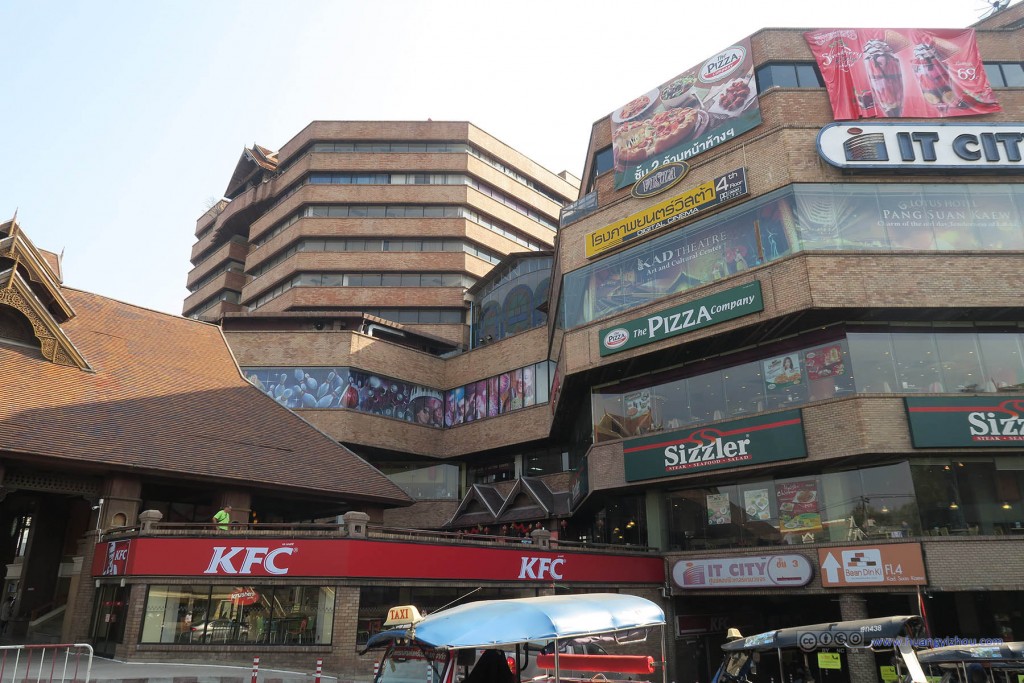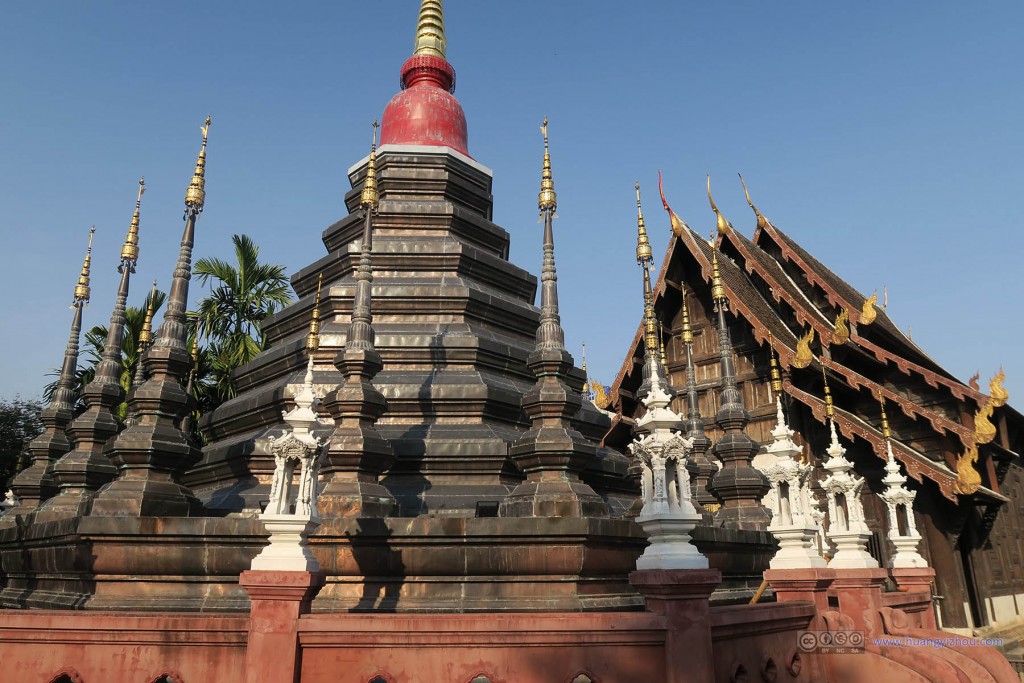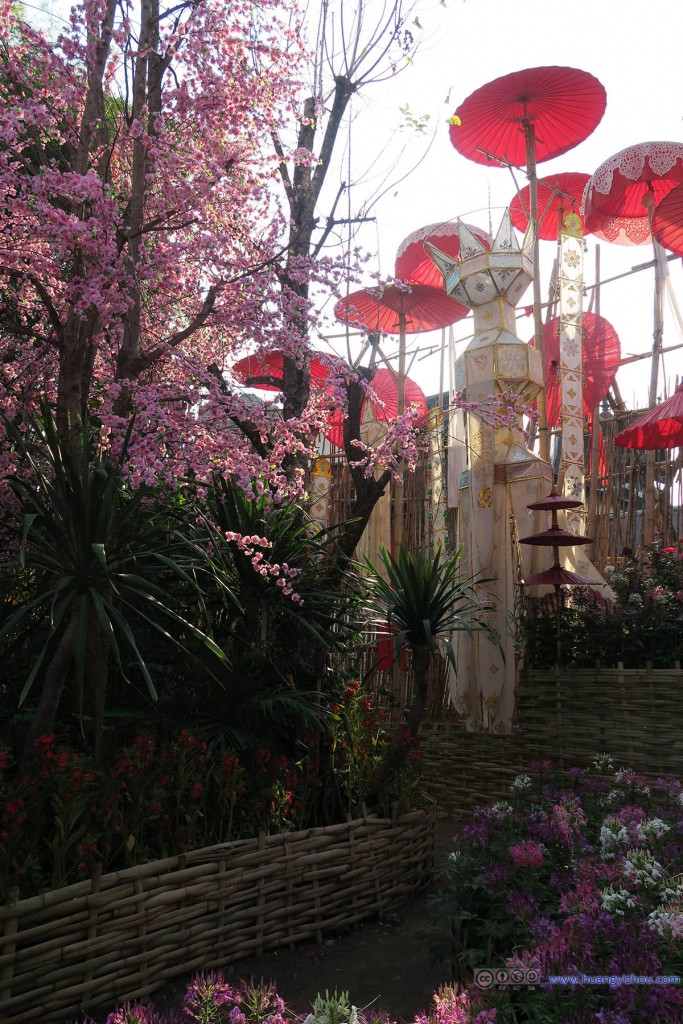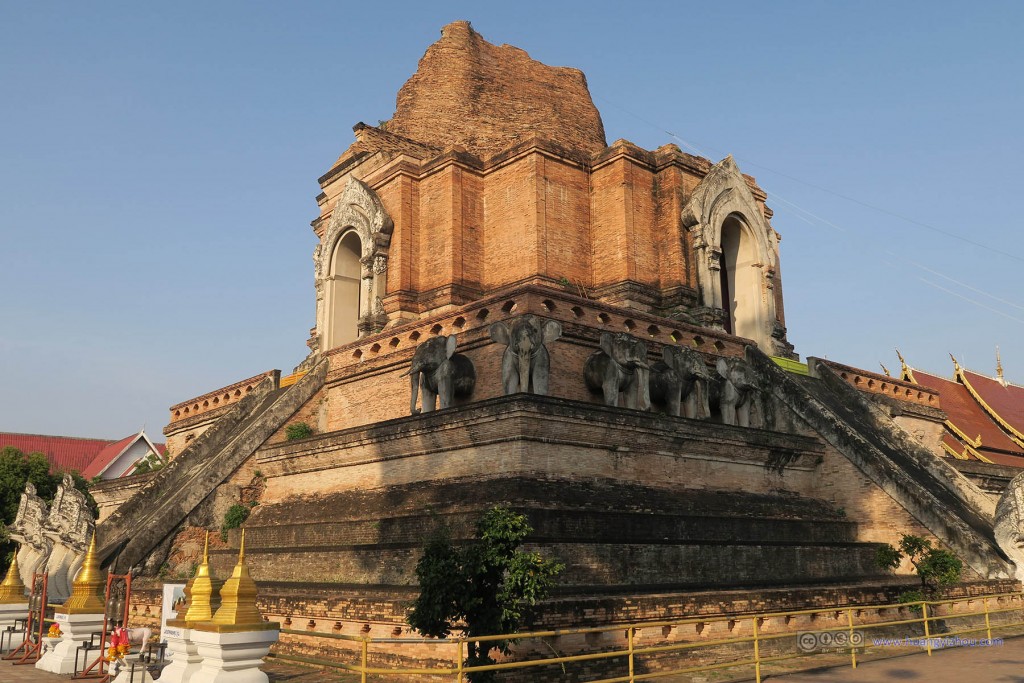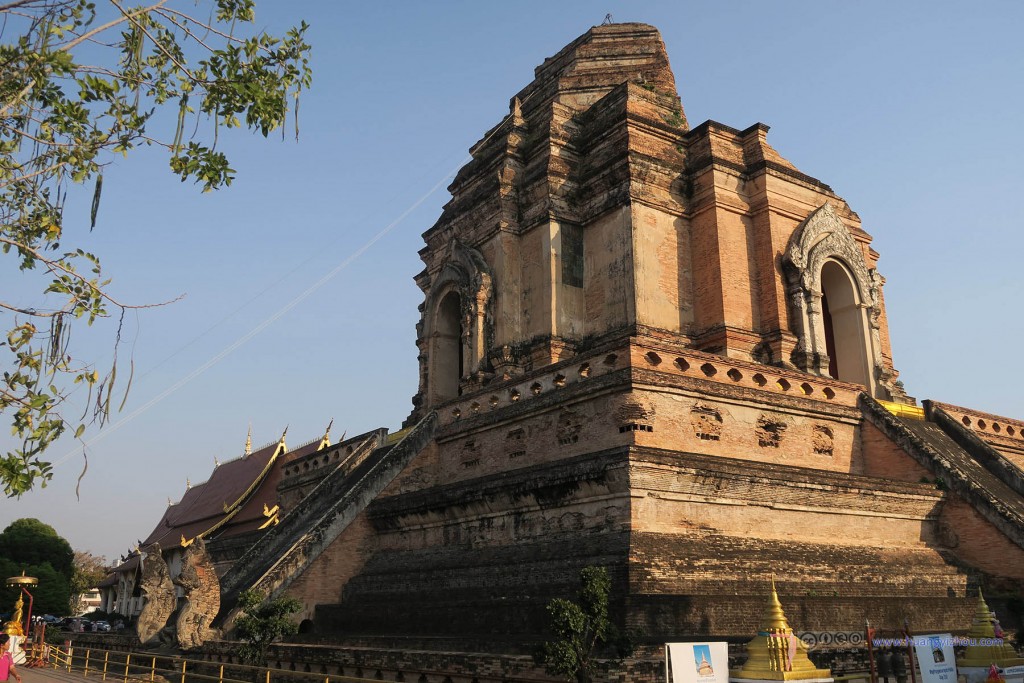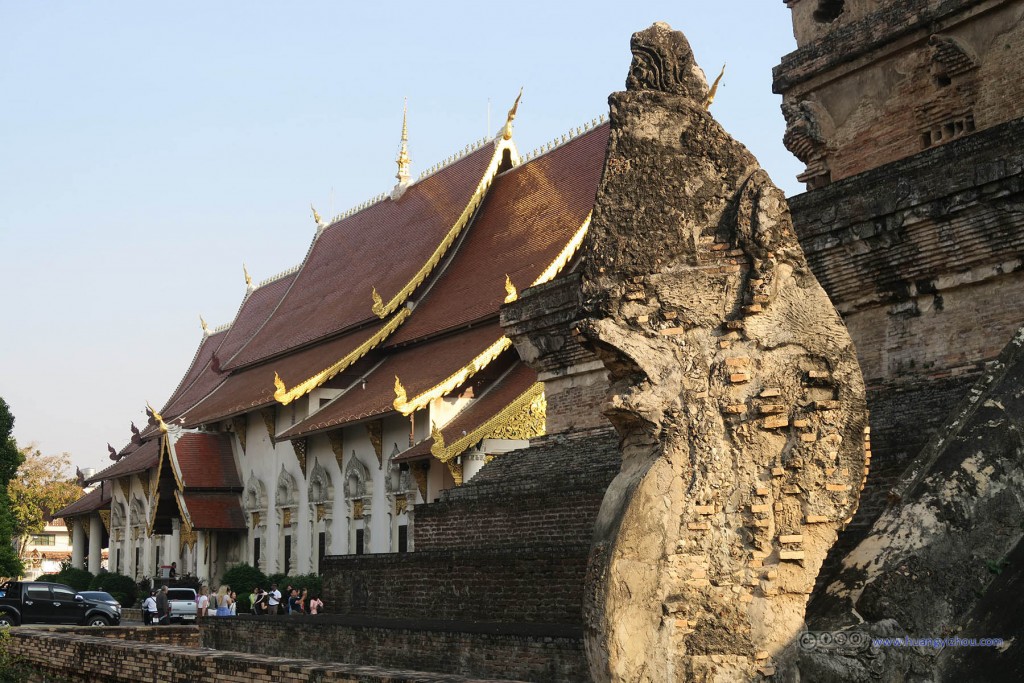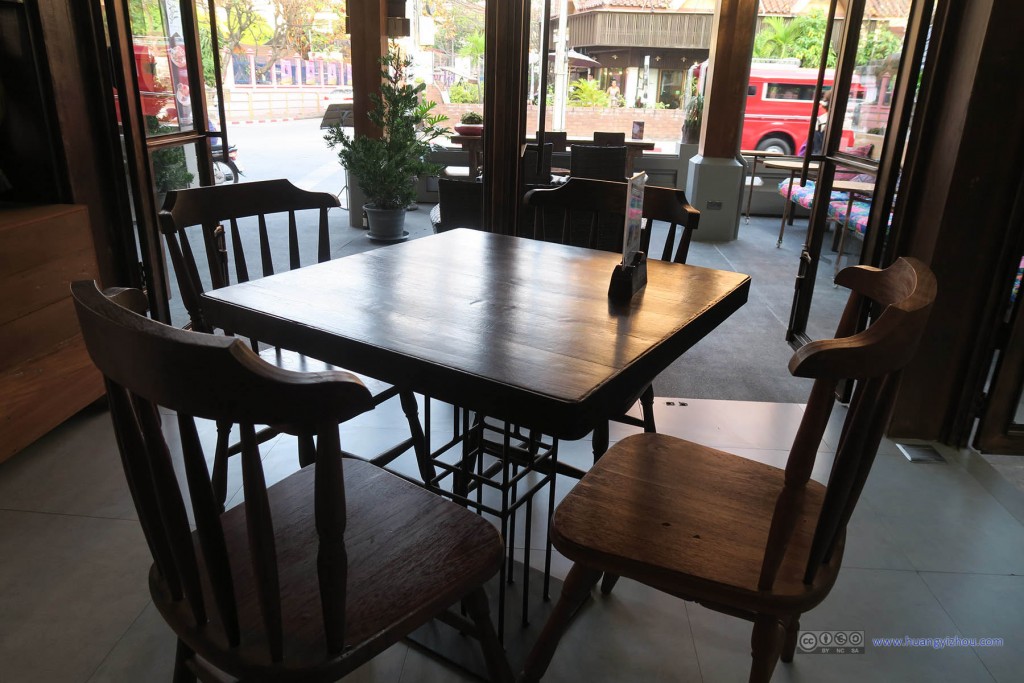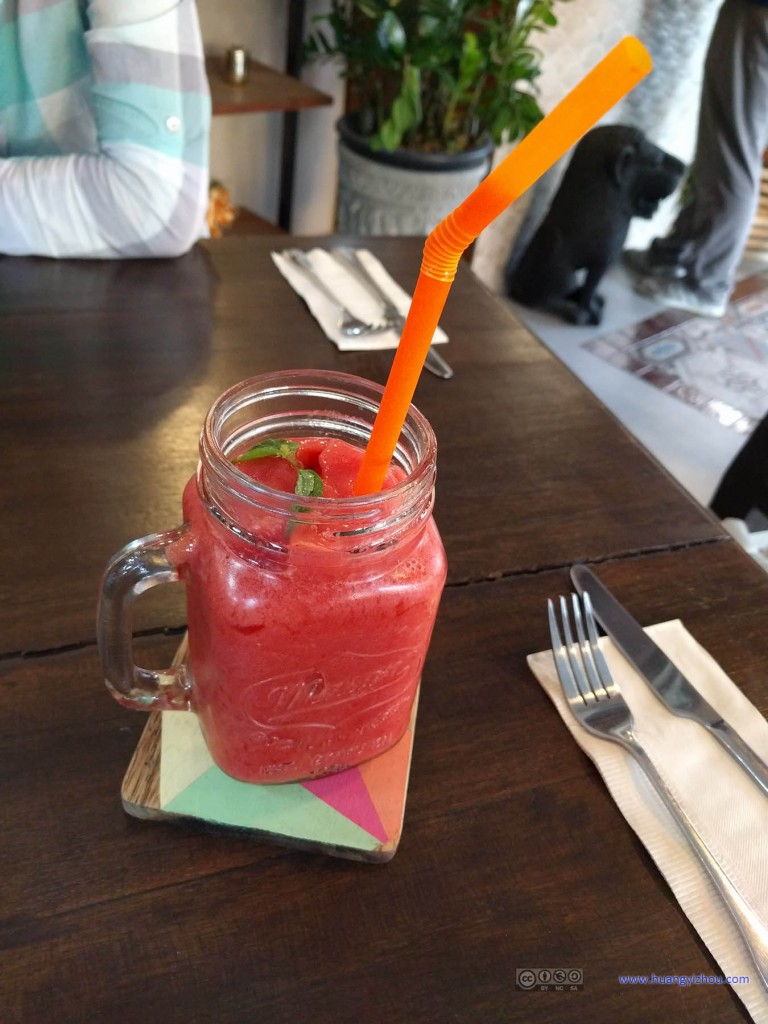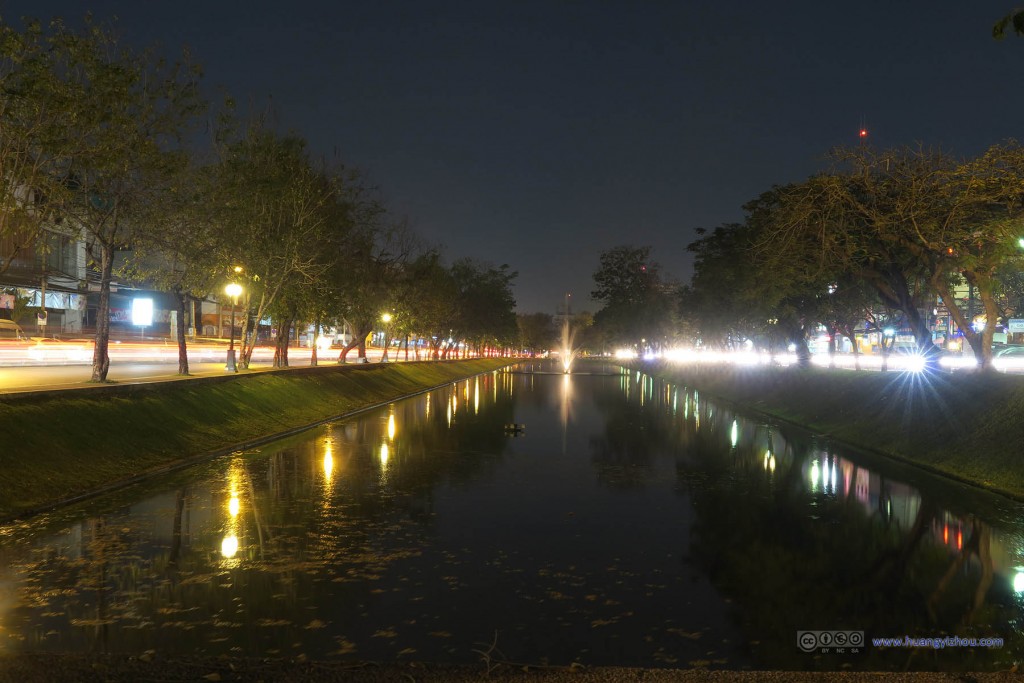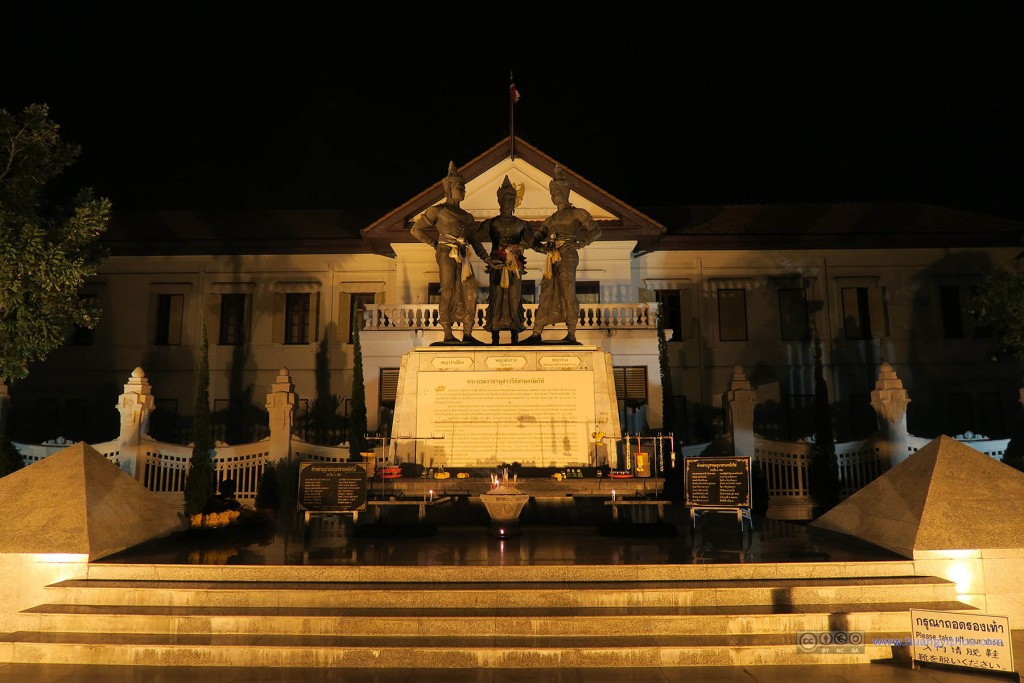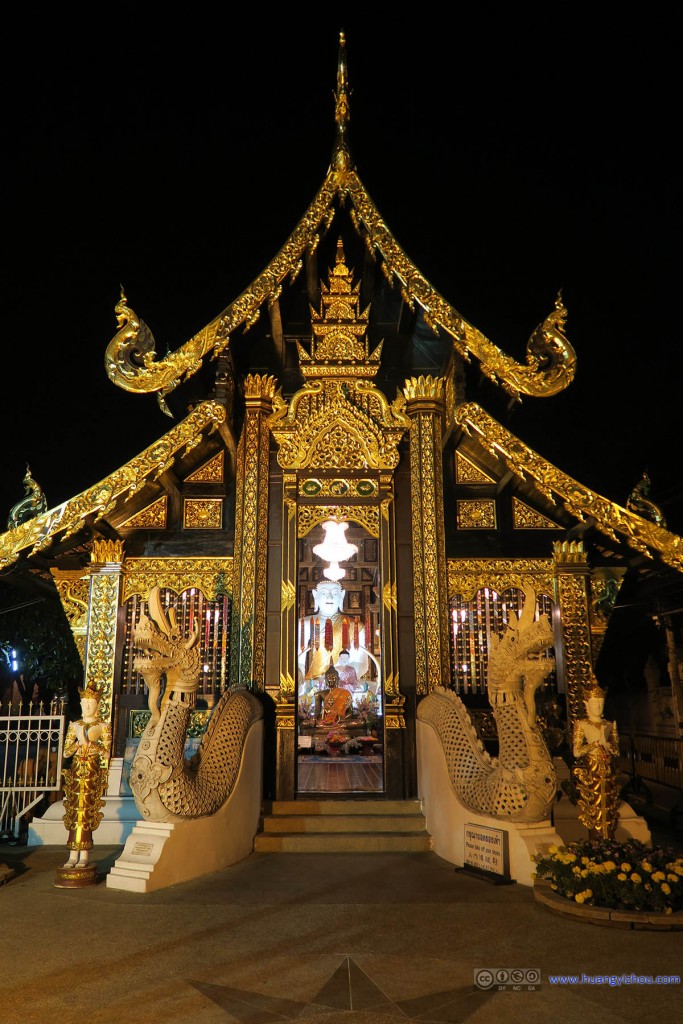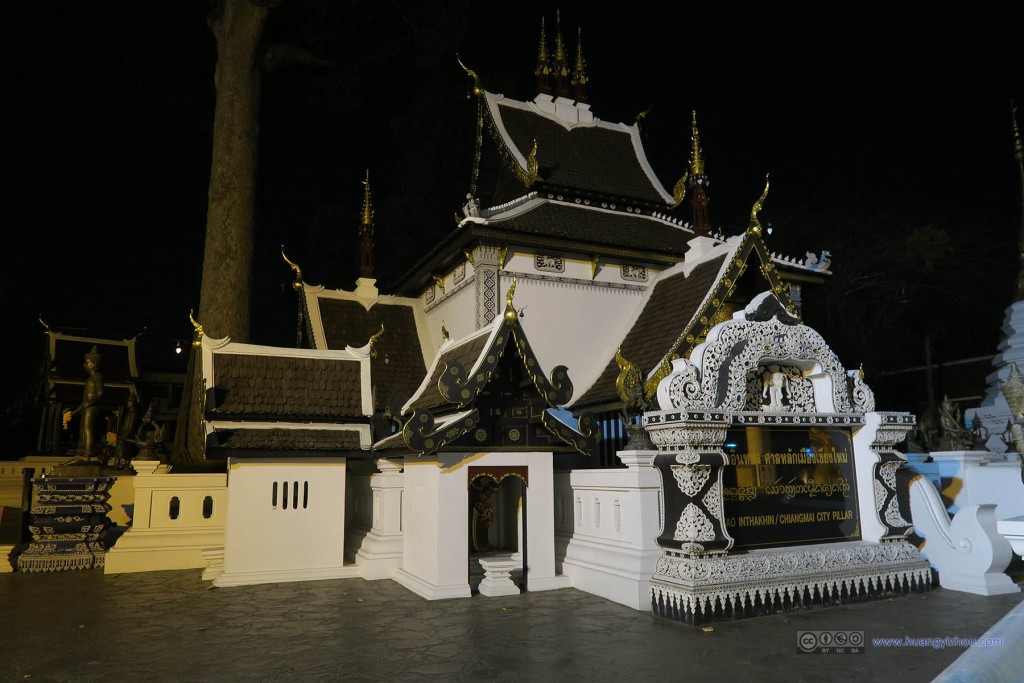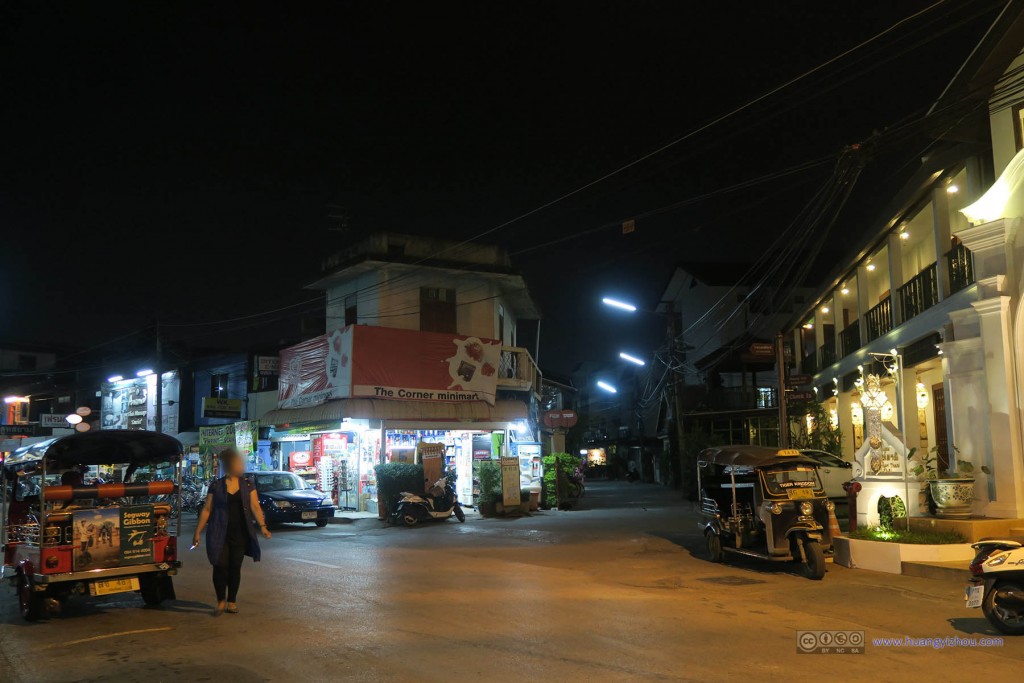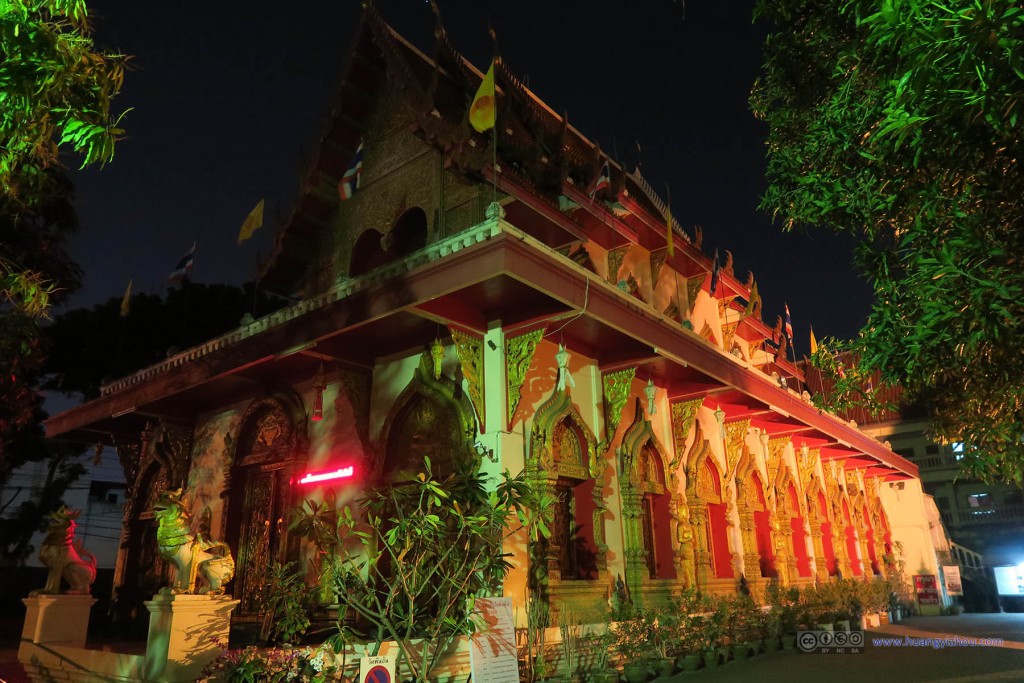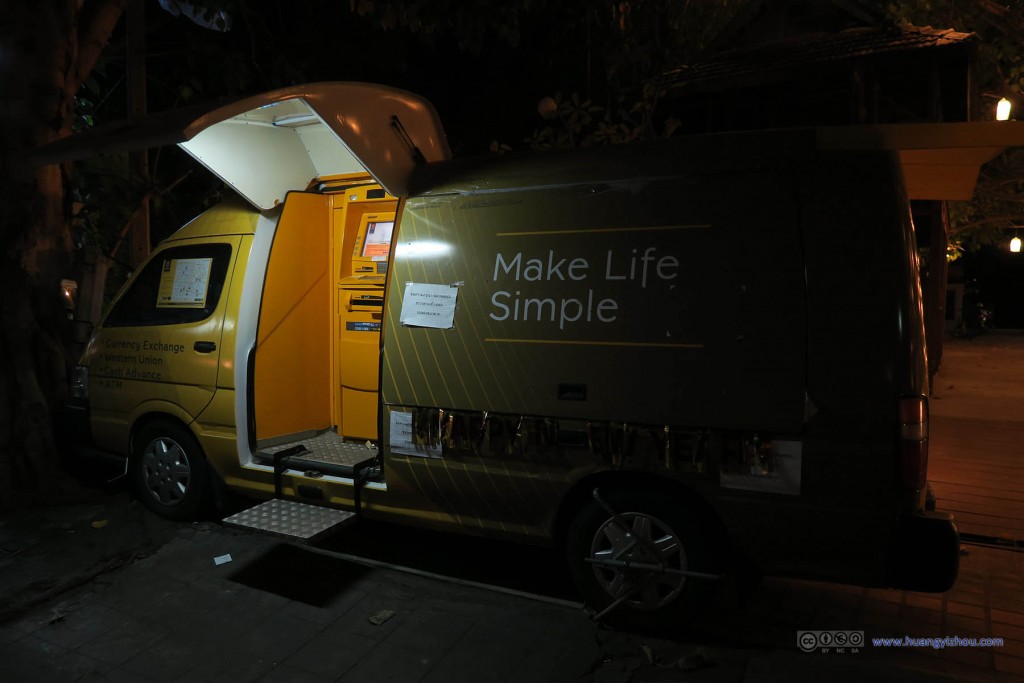Updated on July 9, 2016
Holidays in Thai: Chiang Mai on February 3rd, 2016
Today it’s mainly the various temples in downtown Chiang Mai. So after breakfast we rented two bicycles and cycled randomly in town. In fact, given the density of temples in Chiang Mai, it’s totally fine to walk.
Also in fact, the temples in Chiang Mai followed the same construction pattern.
Maybe because there’s too many temples in Chiang Mai, with fierce competition for tourists, so none of them charged any admission fee. More than that, it felt like they truly welcome people in, to spread their faith to the devoted and their culture to the alien, while I have experienced so many temples in China that preyed on the admission fees with little to offer.
And about donations. It seemed that any temple in Chiang Mai with modest size had got the special skill that can categorize donations into every possible petty type, like water/electricity bills, temple building maintenance, food/education/health care for the monks, etc. Maybe, I guess it’s because local tradition to exchange large notes into small coins and throw them one by one into different bowls. (Then is this similar to garbage classification in China which is only on the surface?)
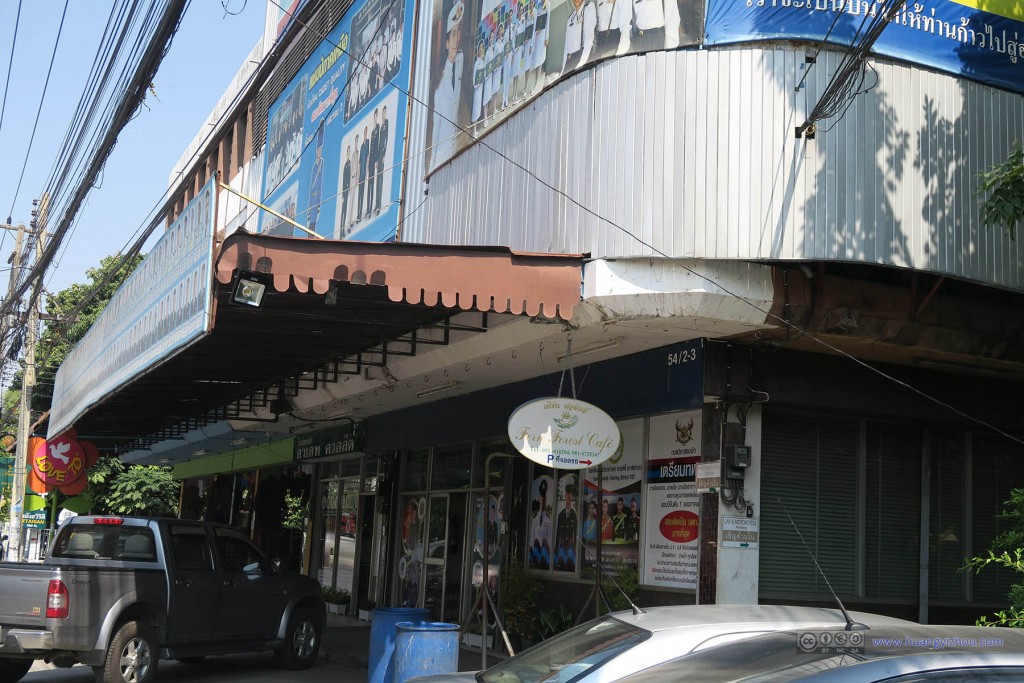
A Shopfront I encountered along the road, with multiple portraits of policemen hanging, don’t know whether this is a poplice academy or a cloth store.
Then it’s the best moment of the day. Before visiting Wat Phra Singh and while looking for parking for my bicycle, I came across Thammarat Sueksa School, which is located in the south of the temple and is affiliated to the temple. It seemed to me that there’s no guard in the school (as there’s no barrier between the school and the temple), I paid it a visit as a tourist.
Although Thammarat Sueksa School is affiliated to the temple, it enrolls not only monks but also civilians, roughly 50-50 (one can also see this from its Facebook page). I took a close look at the gallery displaying their various trophies, during which there were students greeting me, to my amaze, in Chinese.
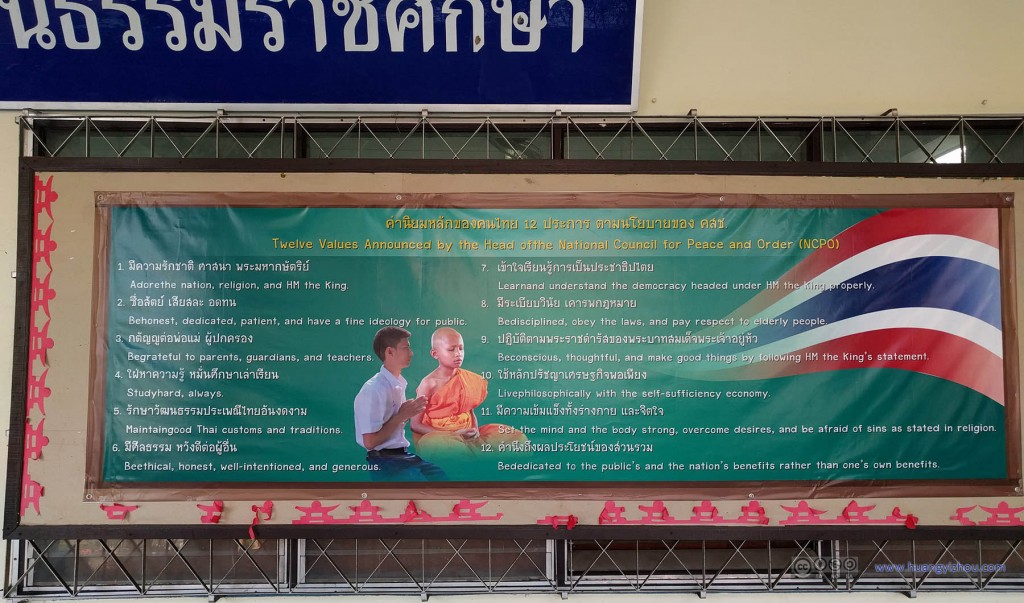
Slogans in Thammarat Sueksa School. Did they learn from the Chinese on the name of National Council for “Peace and Order”?
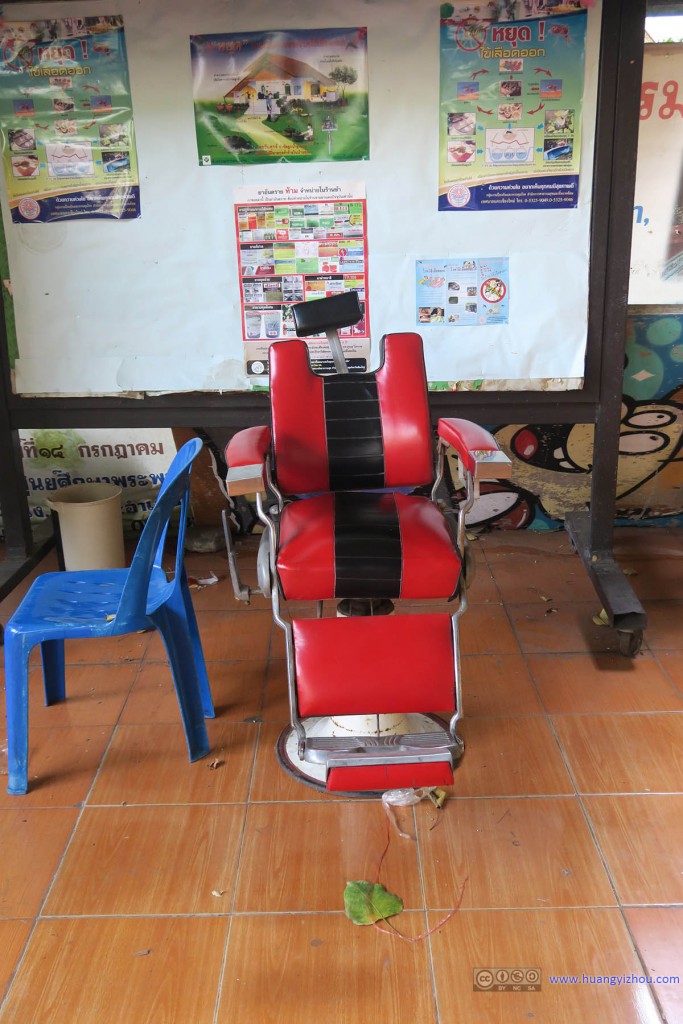
Hair station in Thammarat Sueksa School. Back then I judge on the poor state of this chair that it’s no longer in use, until recently I saw on their Facebook page about pupils having their hair cut….
I had a look at the price tags in their cafeteria while it’s closed. It seemed that basically everything’s below 20THB. Of course, given the environment in which the food is made, I would definitely eat out should I be a student here. I bet nobody would keep the students strictly inside campus in such a “open” school, as they usually do in Chinese schools.
After wandering in the first floor for quite some time, I finally summoned enough courage to persuade myself that it’s really OK to walk around in such a campus, and I decided to further my expedition upstairs. It seems that the Thai tradition of “shoes-off” has certainly reached schools, as Thammarat Sueksa School bans shoes beginning at the first stair upstairs. (At first I thought it’s “shoes-off” all campus, so I roamed the first floor which my shoes in my hand, until someone recognized that I was apparently new to that school and reminded me it’s “shoes-off” only from the stairs on, which I understood as that their school’s totally open.) Usually they have shoe racks in classrooms, where pupils usually put their shoes. For me, in order to get upstairs, I put my very conspicuous NewBalance just on the stairs.
In that school I had a chat with an English teacher and learned that this is largest temple school in Chiang Mai, for students in grades around 7~12. Spacious classrooms though not very well equipped, laughing schoolboys… Yet their classes quite resembled university ones, which people sleeping, texting, just not actually learning.
I don’t remember being taught so many math “tricks” by my elementary school teachers, maybe it’s because Chinese elementary teachers are more practical and taught only the tricks that would appear in the exam paper, which is drafted by them anyway. Maybe they think it’s a more effective investment to memorize “multiplication table” than those tricks.
That’s the end of the school part.
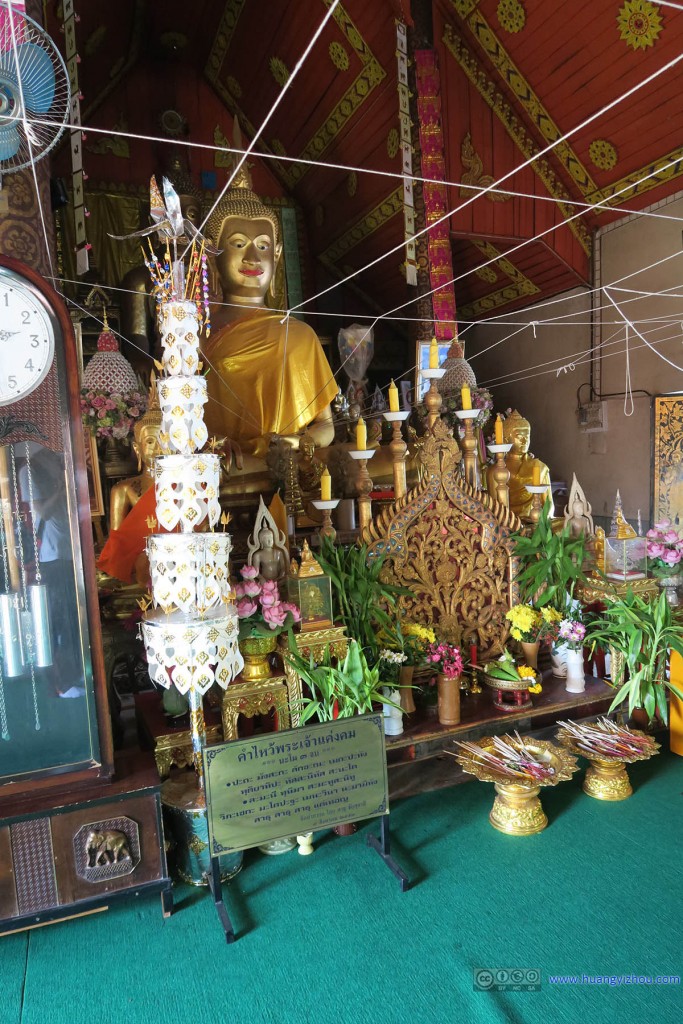
Wat Si Koed, I didn’t quite understand the functionality of those white crossing threads. I guessed it’s for object hanging in festivals, or just a reminder that people in it should stay low as to respect.
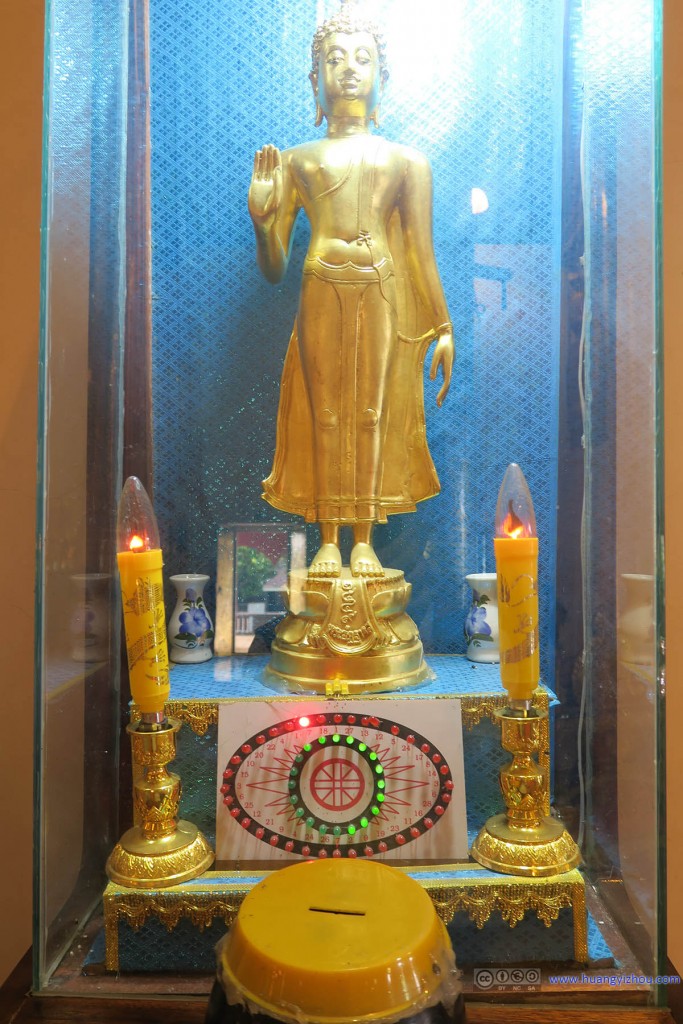
Inside the Ubosot of Chedi Luang Worawihan, there’s a table beside this machine, with the meaning of different numbers. It took me quite a while to come to this fortune-telling of the digital time.
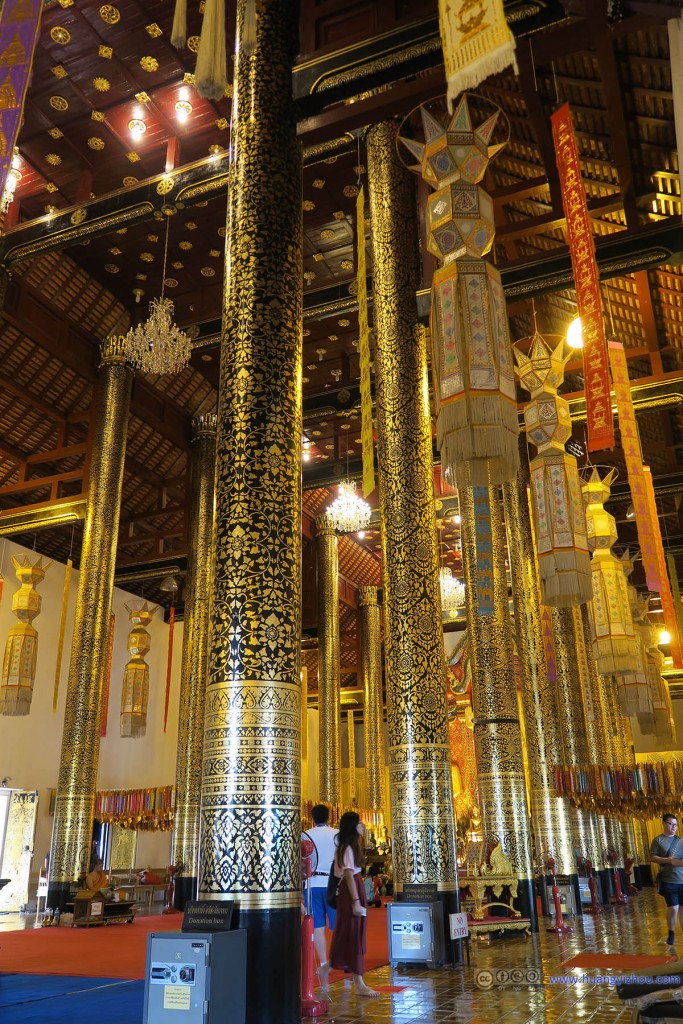
As the best located (not sure whether the largest) temple, Wat Chedi Lung Worawihan should of course be better decorated.
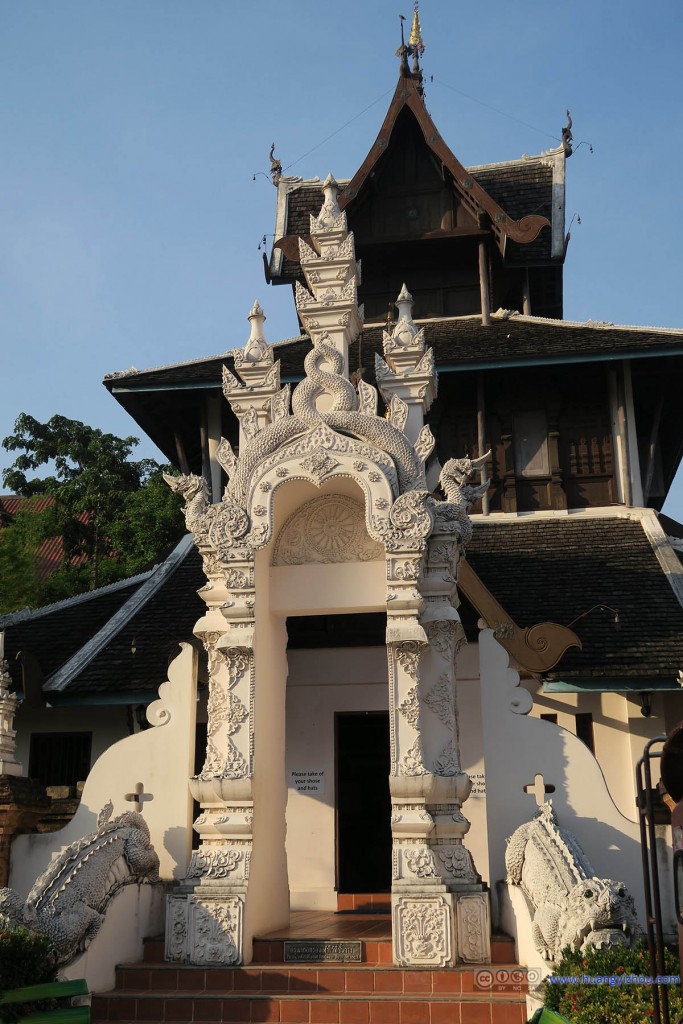
A perimeter building in Wat Chedi Luang Worawihan, now a museum displaying the history of the temple
Then it’s dinner, again we randomly picked a downtown restaurant.
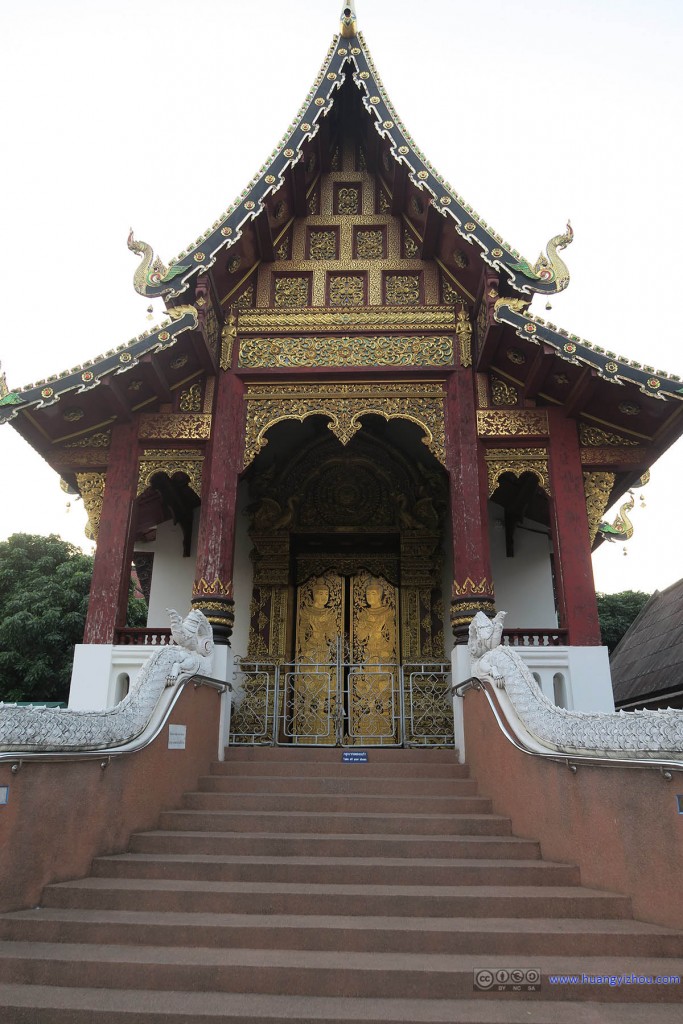
Wat Chang Taem, located just near the restaurant where we had dinner. After we had dinner, it’s closed.
Then we rode back to the bicycle shop, returned the bicycles and walked back hotel. Unlike yesterday, mom retired early and I decided to see this time again at night. In the day there’s still some local resident chatting in the street, yet after dusk, people on the streets all talked in Chinese.
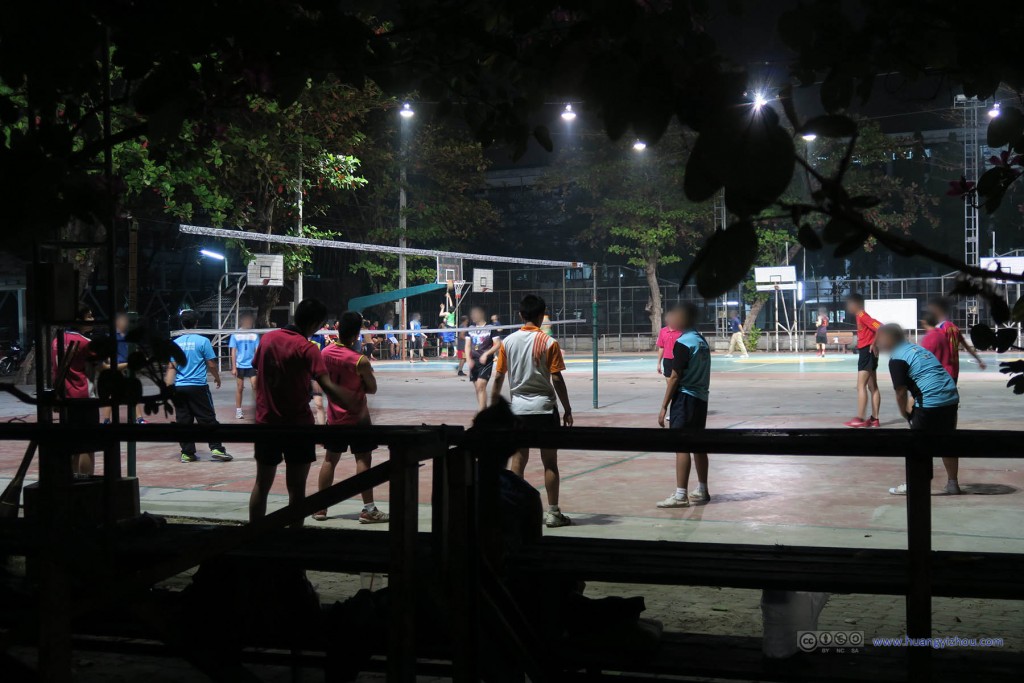
People playing sports in Yupparaj Wittayalai School. It’s pretty shocking to me that the Thai “no-shoe” culture permeates even school playground.
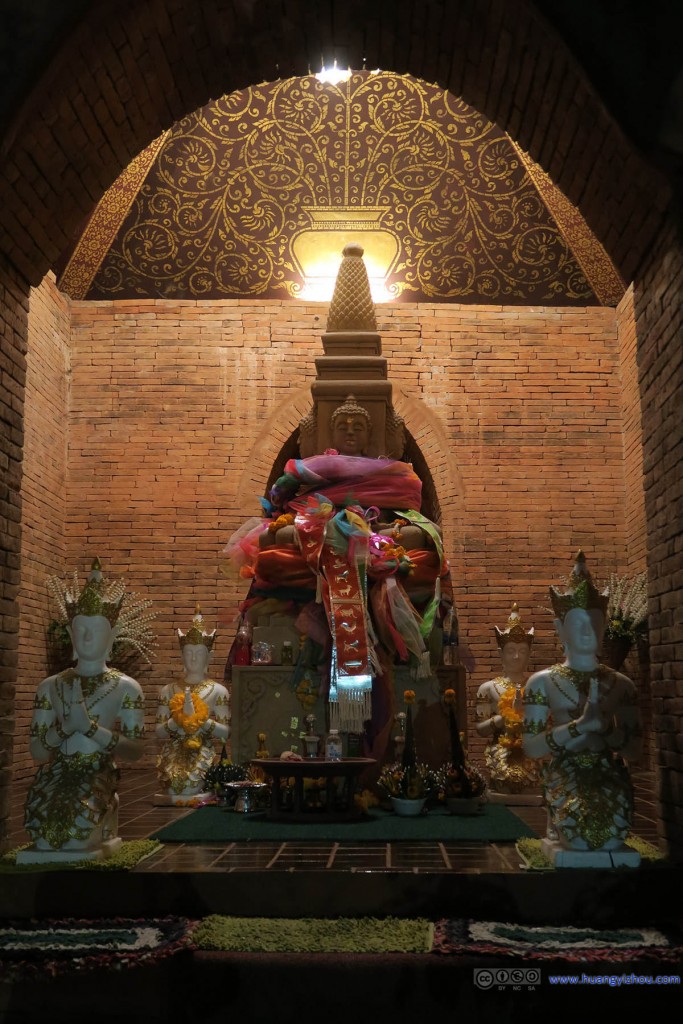
In Wat Inthakhin, I found that it’s the Chinese “Twelve-Animals” on the ribbon surrounding that Buda on the altar.
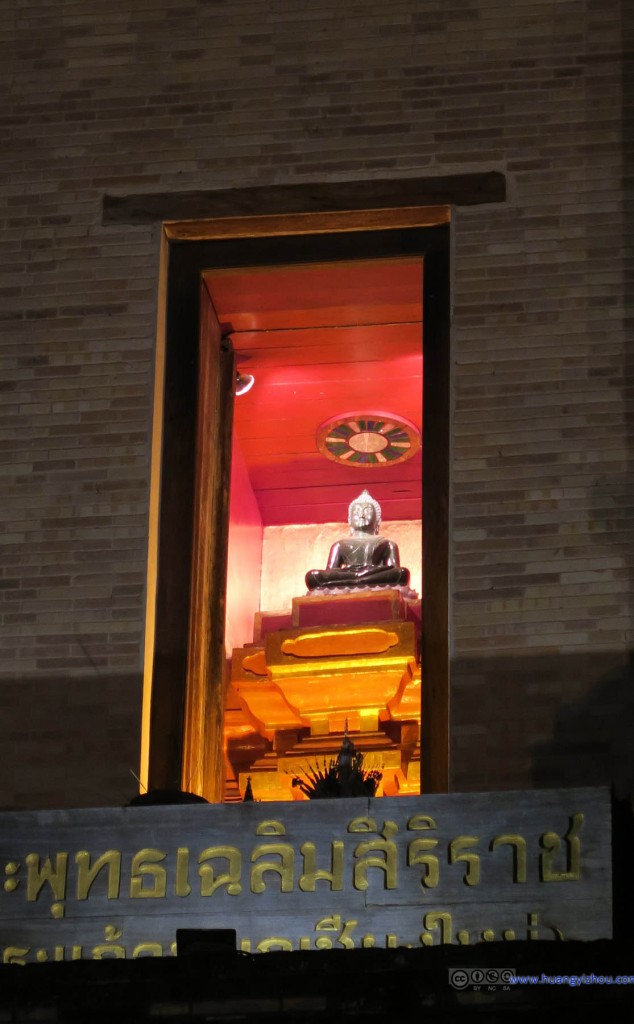
Only at night would I notice that there’s a Buda offered high in Wat Chedi Luang Worawihan. In the day I would only marvel at its majesty.
END
![]() Holidays in Thai: Chiang Mai on February 3rd, 2016 by Huang's Site is licensed under a Creative Commons Attribution-NonCommercial-ShareAlike 4.0 International License.
Holidays in Thai: Chiang Mai on February 3rd, 2016 by Huang's Site is licensed under a Creative Commons Attribution-NonCommercial-ShareAlike 4.0 International License.

